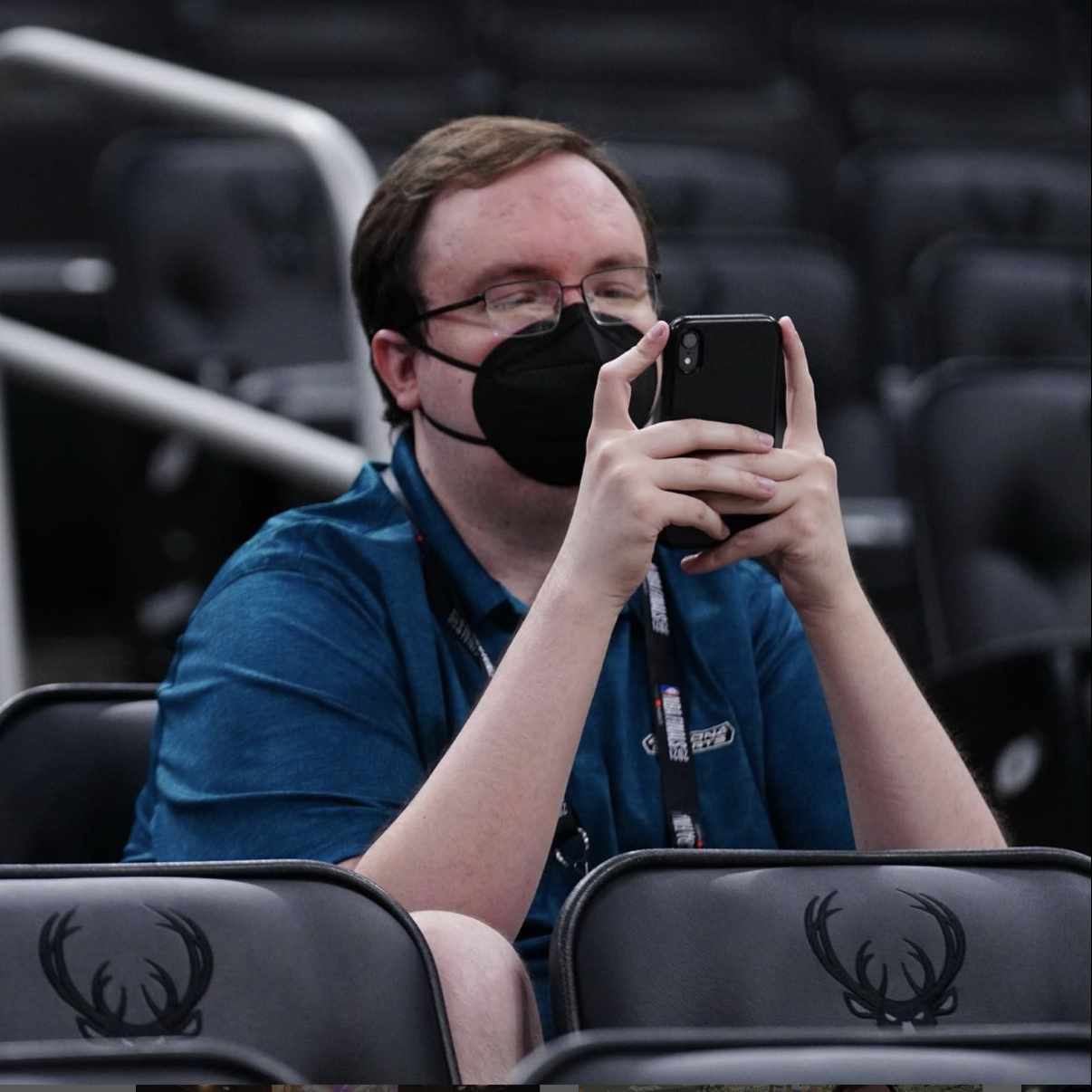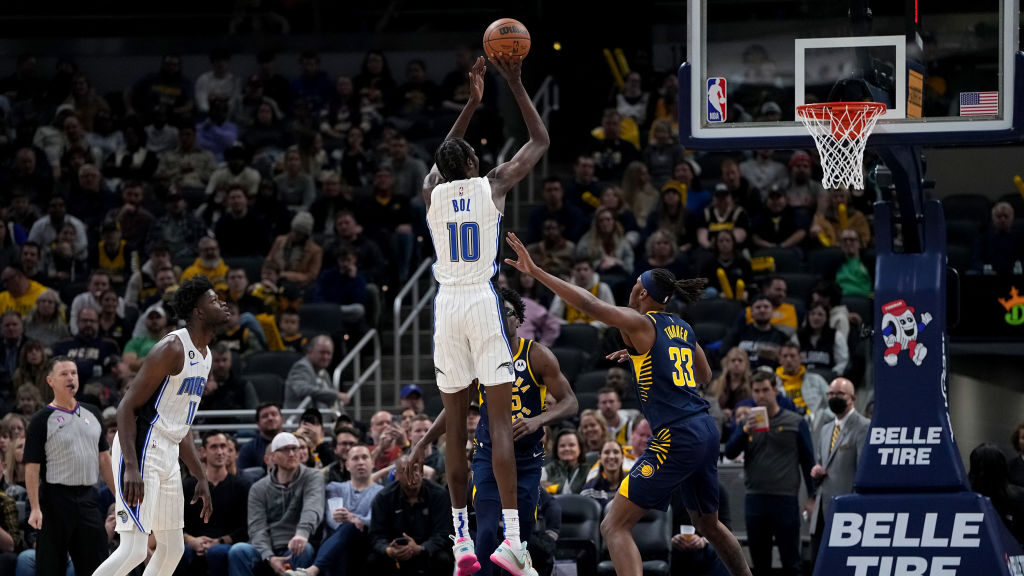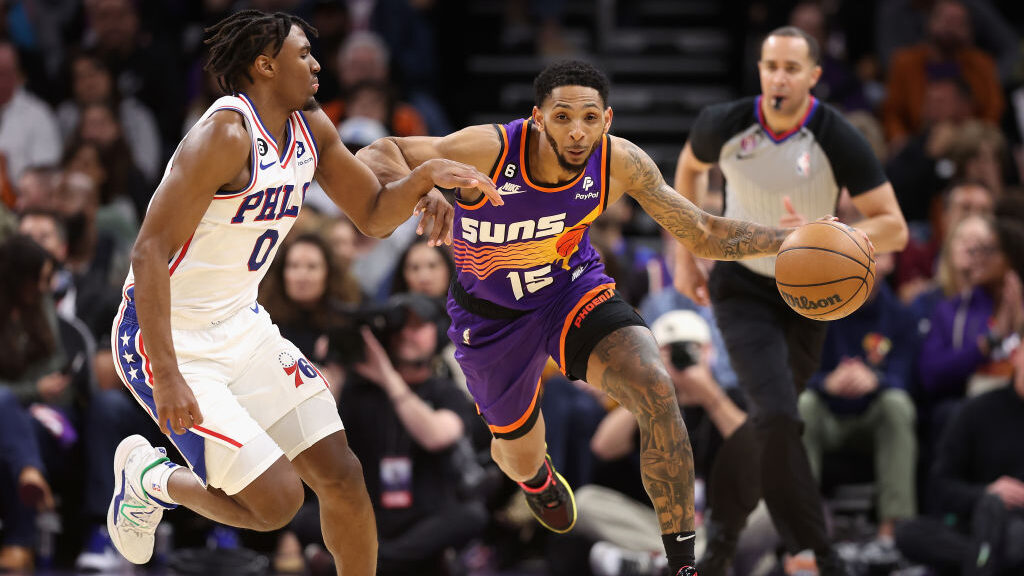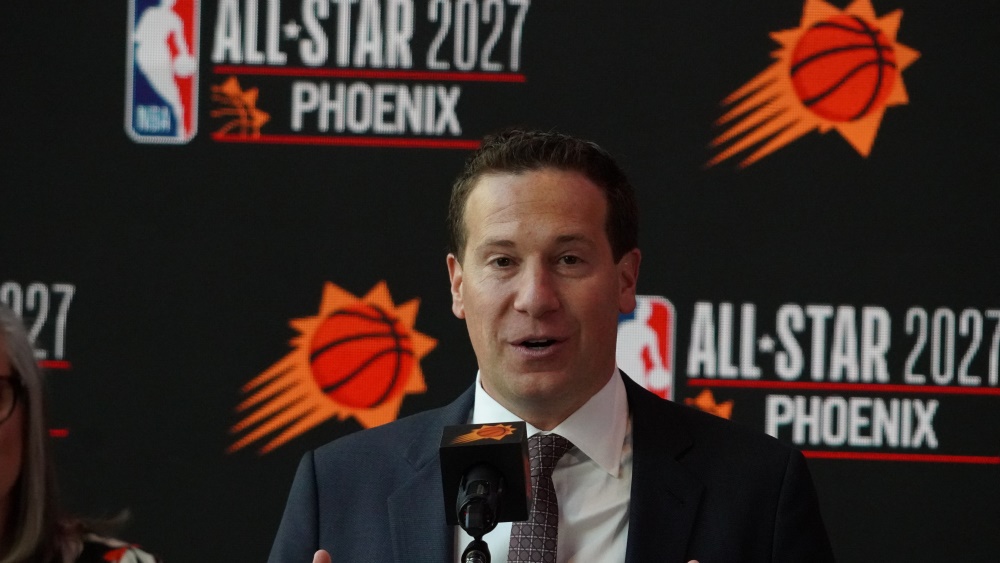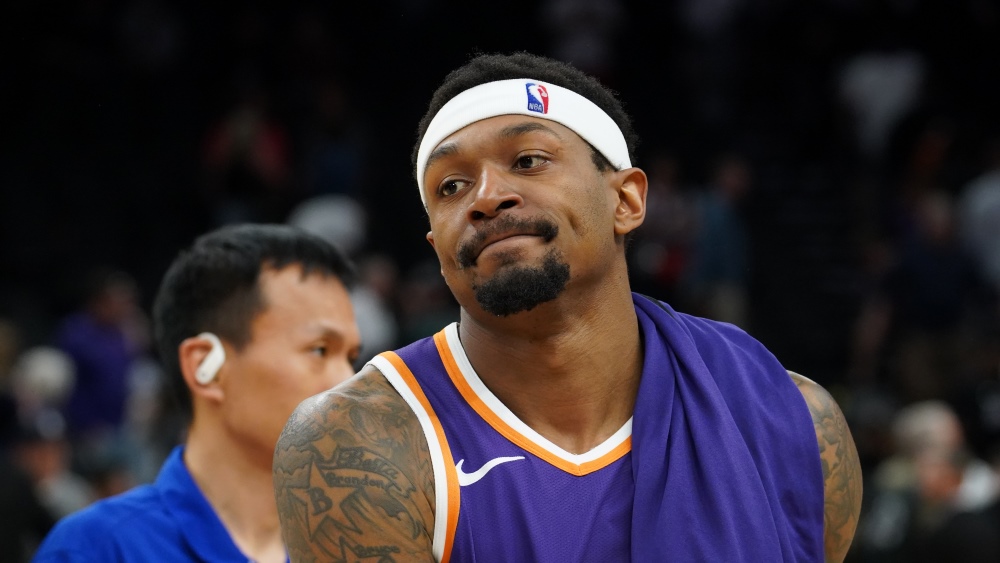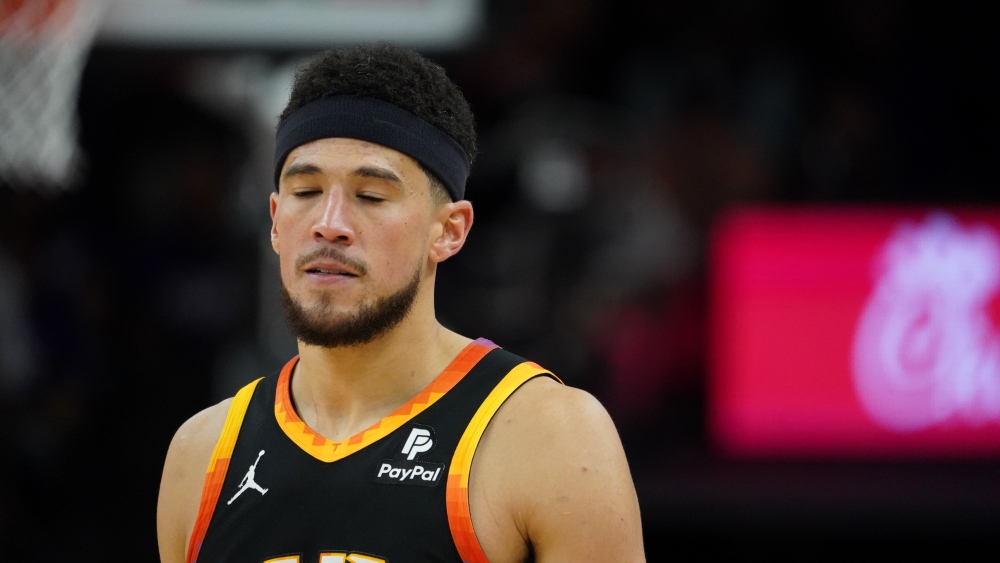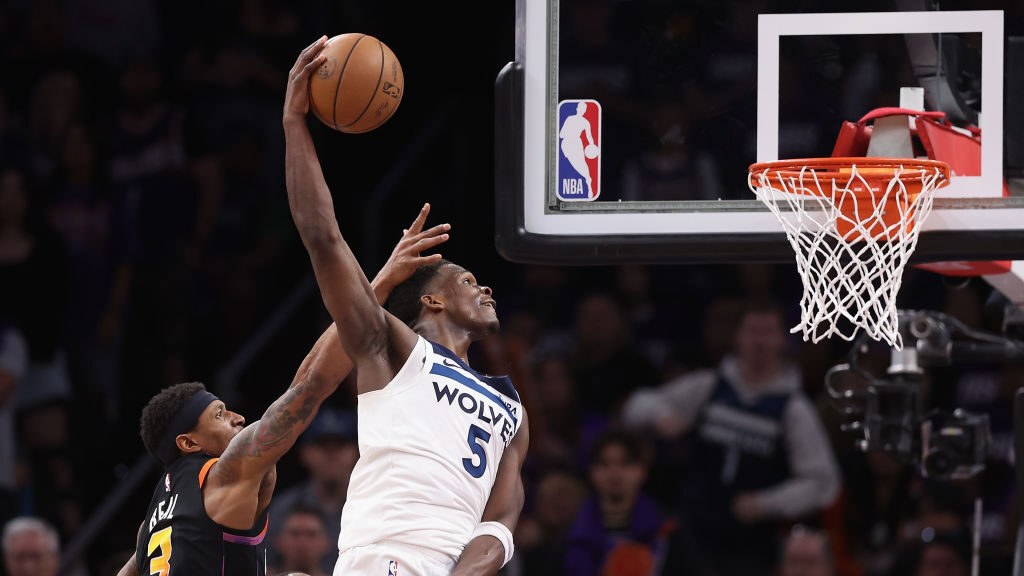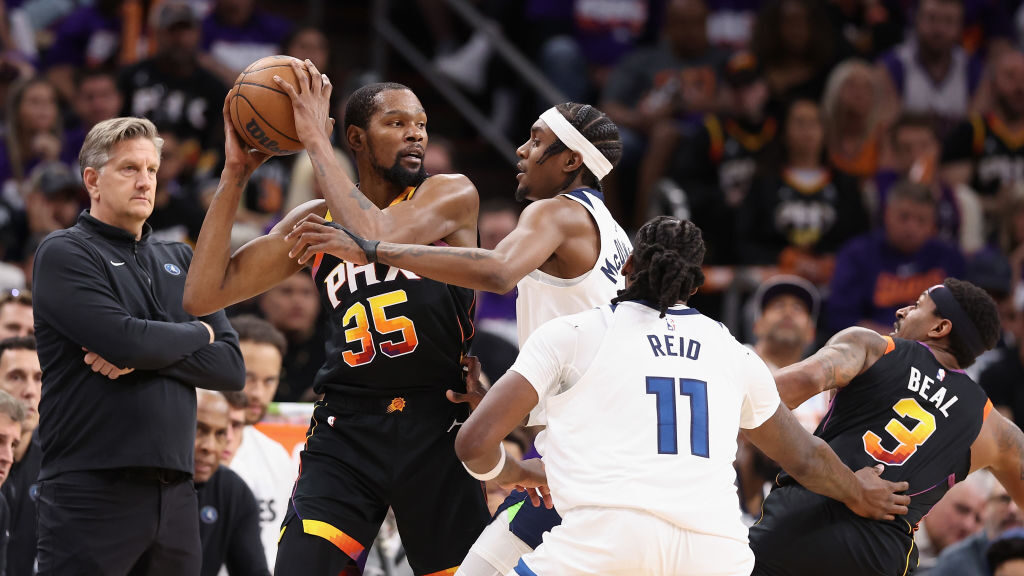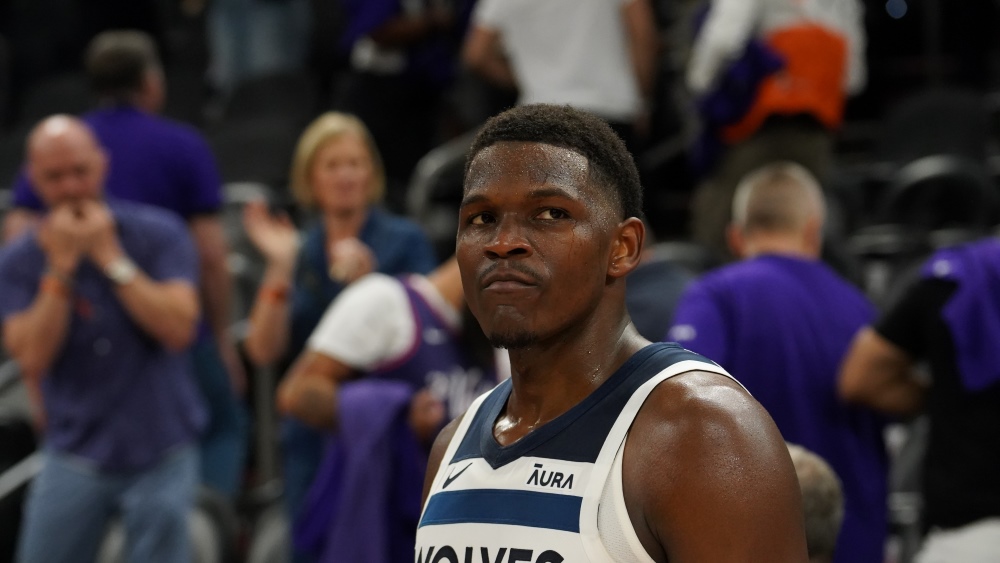Cam Payne trade highlights Suns’ creativity with NBA’s new restrictions
Jul 19, 2023, 9:10 AM | Updated: 10:09 am
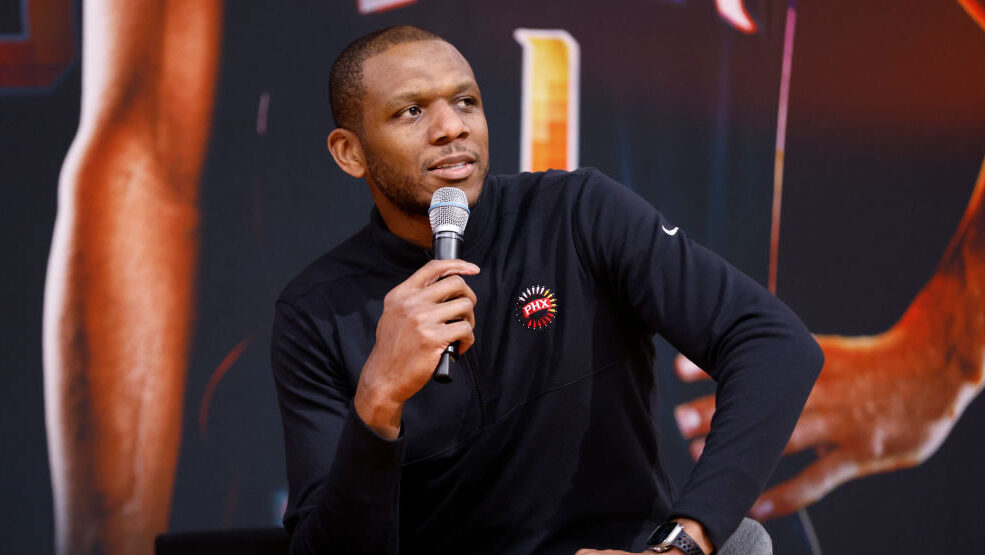
With the ultra-expensive Phoenix Suns almost certainly functioning as a team in the NBA’s new “second apron” of the salary cap for the next couple of years, the limitations and restrictions will be coming in waves, beginning next offseason.
Phoenix’s most recent trade, sending point guard Cam Payne to the San Antonio Spurs on Sunday, put this in more perspective and spotlighted how creative the organization has already become.
The Suns packaged Payne around a second-round pick and cash for a protected second-round pick. Pretty simple. They wanted an open roster spot to sign Bol Bol.
But the details on those assets as shared by ESPN’s Bobby Marks reveal the execution Phoenix was able to pull off that it won’t be capable of in the coming offseasons. And also the value of the unique avenues it already used this summer.
First of all, the Suns essentially lost the net value of a second-rounder in the trade. Phoenix gave up a 2025 second-round pick from the New Orleans Pelicans in exchange for a 2024 selection via the Spurs, but that pick only comes to the Valley if it lands 50-54. Considering the Spurs’ chances of making the playoffs, that ain’t happenin’. The Suns now technically own six second-round picks but it’s more like five.
More so, this was just a necessary part of the deal so Phoenix receives something back from San Antonio, or else the deal wouldn’t be legal. Heavily protected second-rounders have been used like this in the past and will continue to be for the future.
The Suns, however, wouldn’t have even had the second-round pick to offer up had it not received that Pelicans selection from the Memphis Grizzlies in the Isaiah Todd trade when Phoenix used a pick-swap on a first-round selection to acquire three seconds.
The Todd trade and Sunday’s deal with the Orlando Magic, two built around three second-round picks coming back for a first-round pick-swap, restored the Suns’ draft capital to a point of actual functionality with trades again. The Kevin Durant deal made this restock necessary after the Suns dealt all of their tradeable first-round picks. The Bradley Beal acquisition included all of Phoenix’s remaining second-round picks (at that point).
Those swaps were both a part of the Beal trade already, and the Suns can keep firing ’em away, albeit with their value diminishing after each layer of protection. Memphis and Orlando get the quite slim chance of moving up in the first round and the Suns’ own selections potentially get slightly worse.
Here’s what Phoenix now owes in the first round:
2024: Least favorable of own, Washington (if 13-30) or Memphis
2025: To Brooklyn
2026: Least favorable of own, Washington (if not conveyed to New York) or Orlando
2027: To Brooklyn
2028: Least favorable of own, Washington,…
— Bobby Marks (@BobbyMarks42) July 16, 2023
With Beal, Durant and Devin Booker all under contract through at least 2026, that would require massively unforeseen events for the Suns to miss the playoffs, hit the draft lottery and have the 2024 and 2026 swaps come back to bite them. The meat on the bone comes in 2028 and 2030, but as Marks’ above tweet shows, there are four teams involved for the 2028 swap, drastically reducing the odds Phoenix gets screwed.
It’s more about the 2030 swap, if Phoenix lands in the top-10, losing their primary resource to rebuild and moving back to the 20s of that respective draft. But the probability the Suns get any of the four swaps triggered with a pick that valuable is low, and that’s worth what it gained to get loose on the trade market again.
As we’ve seen, it helped get one deal done already, with more to come.
The other bit that got it across the finish line was the cash, and it was a hefty $5.7 million, per Marks. Teams are each given a maximum amount of money it can make a part of trade packages over the course of league year. This year, the number is $7 million, so the Suns nearly emptied the bank entirely in order to send Payne to Texas.
Once the upcoming regular season ends, this deal would no longer have been possible.
2/2- Second Apron Rules pic.twitter.com/Z1xygzb8Rv
— Bobby Marks (@BobbyMarks42) June 19, 2023
The Payne deal also generated a $6.5 million trade exception (TPE), which normally has a one-year expiration. Phoenix can have that exception represent the salary of a player and attach whatever else like picks/cash to complete the deal as long as it has an open roster spot, a way for over-the-cap teams to still maneuver the trade market. (The Spurs are under it, so they were just able to take Payne in.)
In reality, TPEs hardly get used and usually just run out, since it’s so difficult to find players in a specific salary range and an accommodating team OK with that level of assets for a player. But they do get activated occasionally, and in the new rules highlighted above by Marks, Phoenix’s from Payne will run out once the regular season ends. Meaning, if that thing is going to get used, it has to be prior to February’s trade deadline.
The trade ultimately is viewed in the present as a salary dump. Because of the extremes in the luxury tax, getting rid of Payne’s $6.5 million salary in exchange for Bol on the minimum saves Phoenix $26.4 million on the tax ball, per Marks. That bill is still at $53.1 million.
For those of you new to this, which, given past owner Robert Sarver’s tenure, Suns fans certainly are, that’s an extra fee the Suns and owner Mat Ishbia have to pay out of pocket. And the “repeater tax” looms, punishing repeat offenders of four out of the last five years with even further multiplied penalties.
For example, the Warriors’ was $170 million two seasons ago and $163 million last year, per Spotrac. It projects to be $180 million this upcoming season.
When Golden State acquired wing Kelly Oubre Jr. in a trade three seasons ago, his $14.4 million salary added $66 million to the tax bill, essentially meaning the Warriors paid over $80 million for one season of Oubre. The tax bill ended up at $117 million, so it was over half that.
The Suns trading Payne cut it down by 33%, a bill that isn’t concrete until the end of next season. As we’ve gotten to know with Ishbia, he’s going to spend whatever it takes. But there always has to be a line eventually, and this one makes sense given how Payne wasn’t expected to have much of an impactful role.
Yes, he was the lone “true point guard” on the team but with how often at least two of Beal, Booker and Durant will be on the floor, that’s a whole lot of the possessions on the ball accounted for already.
And there are still guards Eric Gordon and Jordan Goodwin coming off the bench. Gordon’s still got some scoring pop left, and while Goodwin is a ball-handler to think of more as starting plays than finishing them, he can still start up possessions so the Big 3 can get loose off the ball. And Goodwin crucially brings most of his value as a defender of the opponent’s primary options.
To revisit the Todd trade, getting something for Todd instead of cutting him to eat even more added onto the luxury tax bill was a positive of that deal too. We know Ishbia will use that saved money in other areas to better the franchise. He has quickly established that level of trust.
Phoenix certainly explored other options when it came to a Payne + spare parts offer for a rotation player but ruled in favor of flexibility, a suggestion that other talks weren’t all that substantial. If something comes to be with the TPEs later this offseason or at the deadline, the Suns’ luxury tax hit likely won’t threaten on reaching nine figures and it has enough second-rounders in place to make a deal functional.
We entered the offseason hammering home the tall task ahead for the Suns upgrading the roster, and it’s going to be even more challenging next year. What they’ve shown, though, is that they’re up for it and will find a way to, as Ishbia always says, get better.

